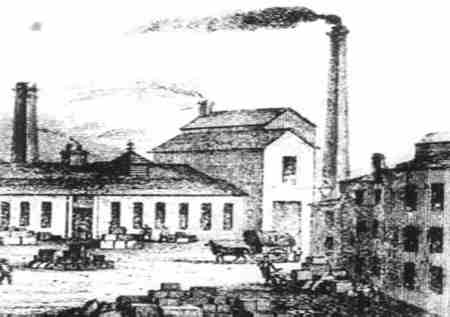
The Industrial Revolution first started in Great Britain and eventually progressed to the United States in the early 19th century. It was first created to raise people's standard of living. Before the revolution, the majority of Americans lived on farmland, small towns, or villages where there was little manufacturing. A farmer usually also was able to make shoes, and the women spent their days making soap and candles, or spinning yarn or making clothing. The manufacturing that did take place was in homes or rural areas and it was done by hand. Some products made in the home (including clothing, furniture, tools, cloth, hardware, jewelry, leather, silverware, and weapons) were even exchanged for food. But, people lived in fear that the crops they grew might fail, as many of them already suffered from malnutrition. In addition, diseases and other epidemics were unfortunately common. In the late 1700’s, the first sign of a revolution occurred when the steam engine was developed. It introduced the concept of companies and factories being able to create goods using machinery, as opposed to a family working together at home. One of the purposes of the Industrial Revolution was to have more goods produced at a lower cost. An immediate change included the production of goods; what was produced, as well as where and how, its cost, and efficiency. The Industrial Revolution was beginning to turn an agricultural economy into one with machines and manufacturing.
The Industrial Revolution was growing rapidly in the United States during the early 19th century. Private investors and financial buildings (such as banks) were needed to provide money to the people who wanted to start a business. This money would allow further industrialization to take place. The purpose of it was to lessen the risks of losing money to the individual investors. This was especially crucial because the new machinery that was needed was expensive. Capital was first introduced as companies combined together their money as “joint stock companies,” and soon after corporations were formally developed. The advantage to this was the most an investor could lose is the amount that they put in; as opposed to losing more money than one initially started with.